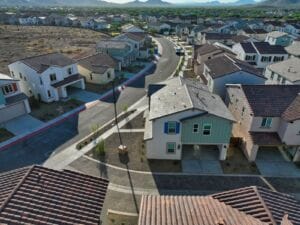CommercialEdge just released its November office report analyzing the U.S. office market’s performance through October 2022 and looking at office vacancy rate.
In 86 of the 120 areas that CommercialEdge covers, vacancy rates have increased in the past year, including in 22 of the 25 most significant markets. Despite the hopes of many industry professionals and occupiers that the office market would level out and perhaps even begin to recover from pandemic decreases, that outlook did not materialize.
READ ALSO: Here’s how the West Valley is attracting healthcare innovators
READ ALSO: Here’s how the West Valley is attracting healthcare innovators
Key findings from our report:
• The average U.S. office listing rate stood at $37.94 per square foot, down 0.1% year-over-year
• Up 150 basis points year-over-year, the national vacancy rate rested at 16.3%
• Under-construction office space totaled 135.5 million square feet in October
• $76.3 billion in office sales were closed in the first 10 months of the year
• At $940 per square foot, San Francisco claims highest office sales price in the U.S.
• The Midwest posts the lowest office sales price with the Twin Cities’ $123 per square foot
• Atlanta and Houston lead in terms of vacancy rates, with both north of 20%
• Manhattan still tops asking rents with $74.75 per square foot
Although many industry players and occupiers hoped for 2022 to be the year when the office market levels out and maybe even starts to recoup pandemic losses, that stabilization did not materialize. Wider economic shifts, the Federal Reserve’s repeated interest rate hikes, the further solidification of work from home and office setups and increasing office footprint reductions by companies meant that vacancy rates continued to rise throughout the year, while rent growth remained patchy.
Listing Rates & Vacancy: Listing Rates Register Significant Growth Only in Select Market
With large swaths of the office-using sector embracing remote and hybrid work at least partially, demand for office has continued to decline in most markets since the onset of the pandemic. Not only that, but many companies have already reduced their office footprints, while others have concrete plans to do so in the near future.
As a result, the national vacancy rate was 150 basis points higher than in October 2021, closing last month at 16.3%.
In fact, over the past 12 months vacancy rates rose in 86 of the 120 markets covered by CommercialEdge, including in 22 of the 25 most important ones. Of the leading U.S. office markets, the sharpest vacancy rate increases were recorded in Portland (+400 bps) and San Francisco (+390 bps). On the other end of the spectrum, only three of the country’s 25 leading markets saw vacancies decline during the same time period: Boston, Charlotte and Washington, D.C.
Across the top 50 U.S. office markets, the average full-service equivalent listing rate stood at $37.94 in October, down 0.1% year-over-year. Considering the significant vacancy declines recorded in Charlotte and Boston, it was to be expected that the two markets would also have some of the most robust listing rate growths in the U.S.
Specifically, the increase in Charlotte’s and Boston’s listing rates were among the three highest in the U.S. In fact, Charlotte and Boston were two of only four markets where listing rates appreciated by double digits over the past 12 months, joined by San Diego and Miami. Growth in these locations was driven by robust life science sectors and increases in in-migration of workers and companies to Sunbelt markets.
Supply: Sunbelt Adds Space as Firms Seek Headquarters
Nationally, 135.5 million square feet of office space was under construction at the end of October, the equivalent of 2.1% of existing stock. Another 6.1% are in the planning stages, but it remains to be seen if they will indeed materialize considering the increased cost of construction materials, supply chain issues, the significant interest rate hikes handed down by the Fed, the increased cost and difficulty of financing and a potential recession.
Although office construction is nowhere near pre-pandemic levels, development has continued over the past 30 months. With the overwhelming majority of office projects that broke ground before the pandemic having been delivered, 80% of the current construction pipeline consists of developments that kicked off after April 2020. Much of the current national construction pipeline is driven by occupiers’ flight to quality and by companies relocating to or expanding into Sunbelt markets.
Specifically, of the 135.5 million square feet of office space currently under construction, 125.7 million square feet are represented by A and A+ projects, with class B spaces accounting for less than 10 million square feet.




